Rhinoplasty in Casablanca
Search and Compare the Best Clinics and Doctors at the Lowest Prices for Rhinoplasty in Casablanca
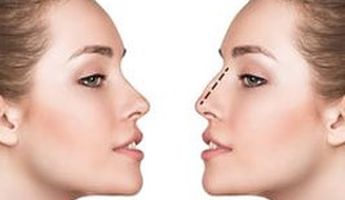
Find the best clinics for Rhinoplasty in Casablanca
With Medijump you can browse 1 facilities offering Rhinoplasty procedures in Casablanca. The cheapest price available is $1,815 in Marrakech. And for the cheapest price globally, prices start from $101 in Poland.
Rhinoplasty in Morocco
Price: $ 1,815
Rhinoplasty in Marrakech
Price: $ 1,815
Poland offers the best prices Worldwide
Price: $ 101
From 23 verified reviews
Zineb Solaihi, 22 November 2019
Clean clinic very lovely staff
Compare Before & After Photos of _procedure_photos.phpRhinoplasty
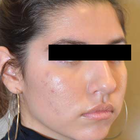

Half-side view


Front view

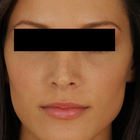
Front view
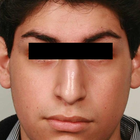
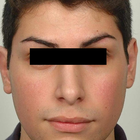
Front view
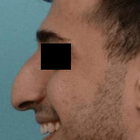

Full-side view
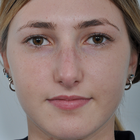
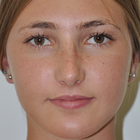
Front view

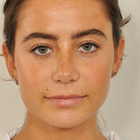
Front view

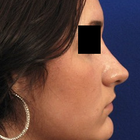
Full-side view
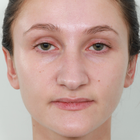
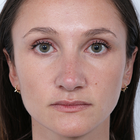
Front view
WHY US?
At Medijump, we're making medical easy. You can search, compare, discuss, and book your medical all in one place. We open the door to the best medical providers worldwide, saving you time and energy along the way, and it's all for FREE, no hidden fees, and no price markups guaranteed. So what are you waiting for?

Free

Best Price

Widest Selection

Risk-Free
What you need to know about Rhinoplasty in Casablanca

Rhinoplasty, commonly known as the “nose job,” is plastic surgery to change the shape of the nose and to improve its function. This procedure can be performed for medical and cosmetic reasons. Those with breathing problems caused by a birth defect, deviated septum, sinusitis, or an injury to the nose, as well as those who are not happy with the appearance of their nose, can undergo rhinoplasty.
Rhinoplasty has a number of benefits. However, the most compelling reason for patients to have this surgery is to improve the appearance of their noses, which can boost their self-esteem significantly. Besides altering the form and size of your nose, the procedure can also strengthen the bridge, narrow the nostrils, and reshape the tip.
While anyone can undergo rhinoplasty, teenagers are advised to wait until their nose has reached its adult size.
What does a Rhinoplasty Procedure Involve?
During rhinoplasty, you will be given local or general anesthesia to make sure that you are comfortable and you don't feel any pain. Your surgeon might perform the procedure inside your nose or through an incision at the base of your nose.
Changing the shape of your nasal bones or cartilage can be done in several ways, depending on how much needs to be added or removed, available materials, and your nose’s structure.
If your nose needs to be augmented because you want to increase its size, prosthetic implants or cartilage from your nasal septum or ear is used. Once your surgeon is done altering the shape of your nose and correcting any defect, they will place the nose’s skin and tissue back, then close the incisions with stitches.
How Long Should I Stay in Casablanca for a Rhinoplasty Procedure?
Depending on the complexity of the procedure and the type of anesthesia used, you may be able to leave the hospital on the same day or stay in the hospital for a day or two. The surgery itself takes around 1.5 to 3 hours to complete. Once you are discharged from the hospital, you should not leave Casablanca right away. Instead, plan to stay about 10 to 14 days for initial recovery and follow-up checkups. A week following the surgery, your surgeon will remove your stitches.
What's the Recovery Time for Rhinoplasty Procedures in Casablanca?
You generally need to wait at least 2 to 3 weeks until you can resume most of your normal activities. However, you should not perform any strenuous activities, such as intense exercise, for about 3 to 6 weeks. During the first few days after the surgery, you will experience some swelling around your eyes, but these will subside within 3 to 14 days. You will also have to wear a nasal splint for about a week following the surgery.
What sort of Aftercare is Required for Rhinoplasty Procedures in Casablanca?
Since you may experience some discomfort, your surgeon will give you painkillers to ease any pain and discomfort. Make sure to take the pain medication as prescribed. For a couple of weeks following the surgery, you should not blow your nose, as well as laughing or talking too much. You also need to avoid any clothes that need to be pulled over your head and glasses on your nose for a few weeks. Always make sure to cover your nose while going out in the sun during your recovery period.
It's important that you avoid bumping or hitting your nose, and keep your nose safe and protected from anything that could misalign the bones and undo the results. To help you recover smoothly and quickly, eat healthy and nutritious food.
What's the Success Rate of Rhinoplasty Procedures in Casablanca?
Rhinoplasty is considered one of the most complicated facial cosmetic surgeries. However, thanks to the advances in technology and surgeons’ extensive experience, the procedure has a very high success rate of between 85% and 90%.
Although rhinoplasty is generally safe, it does carry some potential risks of complications and side effects, including bleeding, infection, allergic reaction to the anesthesia, permanent numbness in your nose, difficulty breathing through the nose, an uneven-looking nose, discoloration, persisting pain, scarring, septal perforation, and a need for additional surgery.
Are there Alternatives to Rhinoplasty Procedures in Casablanca?
If you are unable to undergo rhinoplasty, you can opt for its minimally invasive or noninvasive alternatives, such as filler injections or Botox. Both filler injections and Botox are noninvasive and require only a very short visit with your doctor. It works by injecting the substance into your nose to change its shape. Many people choose these methods because it is not as painful as rhinoplasty, requires little to no downtime, and no incision or stitches are involved.
If you want to improve your breathing, you may be recommended to use nasal strips. The nasal strip is a type of bandage with adhesive-embedded splints or plastic ribs that is applied across the bridge of the nose and the sides of the nostrils. It can keep the airway open, making breathing easier.
Whilst the information presented here has been accurately sourced and verified by a medical professional for its accuracy, it is still advised to consult with your doctor before pursuing a medical treatment at one of the listed medical providers
No Time?
Tell us what you're looking for and we'll reachout to the top clinics all at once
Enquire Now

Popular Procedures in Casablanca
Prices Start From $404

Prices Start From $1,945

Prices Start From $192

Prices Start From $500

Recommended Medical Centers in Casablanca for Rhinoplasty

- Interpreter services
- Translation service
- Religious facilities
- Medical records transfer
- Medical travel insurance
- Health insurance coordination
- TV in the room
- Safe in the room
- Phone in the room
- Private rooms for patients available

- Interpreter services
- Translation service
- Religious facilities
- Medical records transfer
- Medical travel insurance
- Health insurance coordination
- TV in the room
- Safe in the room
- Phone in the room
- Private rooms for patients available

- Interpreter services
- Translation service
- Religious facilities
- Medical records transfer
- Medical travel insurance
- Health insurance coordination
- TV in the room
- Safe in the room
- Phone in the room
- Private rooms for patients available

- Interpreter services
- Translation service
- Religious facilities
- Medical records transfer
- Medical travel insurance
- Health insurance coordination
- TV in the room
- Safe in the room
- Phone in the room
- Private rooms for patients available

- Interpreter services
- Translation service
- Religious facilities
- Medical records transfer
- Medical travel insurance
- Health insurance coordination
- TV in the room
- Safe in the room
- Phone in the room
- Private rooms for patients available

- Interpreter services
- Translation service
- Religious facilities
- Medical records transfer
- Medical travel insurance
- Health insurance coordination
- TV in the room
- Safe in the room
- Phone in the room
- Private rooms for patients available

- Interpreter services
- Translation service
- Religious facilities
- Medical records transfer
- Medical travel insurance
- Health insurance coordination
- TV in the room
- Safe in the room
- Phone in the room
- Private rooms for patients available

- Interpreter services
- Translation service
- Religious facilities
- Medical records transfer
- Medical travel insurance
- Health insurance coordination
- TV in the room
- Safe in the room
- Phone in the room
- Private rooms for patients available

- Interpreter services
- Translation service
- Religious facilities
- Medical records transfer
- Medical travel insurance
- Health insurance coordination
- TV in the room
- Safe in the room
- Phone in the room
- Private rooms for patients available

- Interpreter services
- Translation service
- Religious facilities
- Medical records transfer
- Medical travel insurance
- Health insurance coordination
- TV in the room
- Safe in the room
- Phone in the room
- Private rooms for patients available
Rhinoplasty in and around Casablanca
About Casablanca
Casablanca is the largest city in Morocco and is located in the central-western part of the country. Many local and international companies set up their headquarters in this city, making it the primary industrial zone of the country. Casablanca might be the least popular tourist destination in the country, but take a closer look, it does have a lot of hidden gems. Tourists will find many astonishing things to see here. From beaches, markets, culture, to Art Deco architecture, this city is definitely worth a visit.
In line with Morocco’s emerging medical tourism, Casablanca welcomes an increasing number of medical tourists each year. The city is considered to be the most developed market for medical tourists, which in turn as made it one of the leading destinations for medical tourism in Africa. The medical system is divided into two sectors, public and private. The city is known for its modern medical facilities equipped with high-tech equipment. People from the Middle East, Europe, and the United States choose the city for cosmetic surgery and dental procedures, while people from other African countries with inferior medical centers come to have better healthcare. For medical tourists from Western countries, medical treatment in Casablanca is a lot more affordable.
Popular Areas in Casablanca
Casablanca is the main gateway to Morocco and despite only having a few tourist attractions; visitors will find some gems after a little exploration.
- Hassan II Mosque was completed in 1993 and built on a platform overlooking the Atlantic Ocean. Covering around two hectares in size and can accommodate more than 100,000 worshippers, it is the second-largest mosque in the world. The dramatic location combined with the beautiful architecture offers a unique experience of praying.
- The Medina or the old city district is a perfect place to wander around. The maze-like alleyways hide many things waiting to be discovered. Tourists can experience the local’s daily life, have some tasty food in one of the cafes, find traditional treasures in one of its shops, or just stroll around and admire its beauty.
- Cathedral du Sacre Coeur may have been left to waste away in the past decades, but tourists can still see its beautiful structure and architecture. The guardian will sometime let tourists inside to get a sense of the building’s interior. The architecture is a perfect mix of European and Moroccan style.
- Central Market is the place for tourists who want to shop and it is a bustling market where locals buy and sell groceries, but tourists usually come for Morocco’s famous slippers or solely for an opportunity to get amazing photos. Do a little haggling and take home some beautiful local souvenirs.
- Corniche or beachfront district is located in the same region as the Hassan II Mosque. The shoreline is filled with luxury restaurants, hotels, and beach clubs. There is also a public beach packed with surfers and swimmers. During sunny days, especially on weekends, people come to picnic on the beaches, have a refreshing dip in the sea, or splash around in swimming pools.
Weather and Climate in Casablanca
The weather in this charming city can be quiet hot as it has a hot-summer Mediterranean climate. Thanks to the cool Canary current off the Atlantic coast, there are always cool breezes even during the hottest days. The summer generally starts in June and ends in August. June is the driest month in Casablanca and August is the hottest month with an average temperature of around 26 °C. The temperature will decrease in October and the average rainfall will increase in December. Winter starts in December and visitors can expect January to be the coldest month with the temperature ranging from 7 °C to 17 °C. February experiences a lot of rain, making it the wettest month of the year.
Getting Around in Casablanca
Casablanca is home to the country’s primary international airport: Casablanca's Mohammed V International Airport. It is the busiest airport in Morocco, located in Nouaceur Province and the airport operates both domestic and international flights which connect the city to many major cities in the Middle East, America, and Europe. Several budget airlines such as Air Arabia Maroc, Transavia Airlines, and Pegasus Airlines operate flights to and from this airport.
There are plenty of options to get around Casablanca and tourists can try the tram to get a good look at the city. The tram operates from 06.00 AM to 10.30 PM. The line connects some of the main neighborhoods and consists of 48 stops. The most inexpensive way to get around the city is by bus and it costs around 5 MAD. It is best to begin your journey at the designated stops along each bus route instead of stopping a bus in transit.
Taxis are widely available and there are two kinds of taxis: The Red taxi (Petit Taxi) or the White Taxi. The red taxi is a shared taxi, typically by four passengers. The White taxis act like buses with a set route and a fixed price, but the ride is much faster than the bus and you should always pay the driver at the start of your trip.
Tourist Visas in Casablanca
Citizens of 66 countries including Australia, New Zealand, the United States, the European Union, and Japan can enter and stay in the country for up to 90 days without a visa. Citizens of Mali, Guinea, and the Republic of the Congo do not need a visa to enter but must obtain an Electronic Travel Authorization. It is best to always check the current regulations to the Moroccan Embassy or Consulate in your country.
Additional Information
- Local Currency: Moroccan Dirham (MAD) is the official currency. The exchange rate from 1 USD is 9.70 MAD.
- Money & Payments: The easiest way to access money is by the ATMs which can be found easily around the city. Credit cards are mostly accepted in high-end restaurants and hotels. Tipping can be mandatory sometimes.
- Local Language: The official language is Arabic and Berber. French is widely spoken and understood. While English is not widely spoken, there are many people who can speak English, especially in tourist areas.
- Local Culture and Religion: Most of the population are Muslims. Nevertheless, Christianity, Judaism, and Baha’i Faith are freely practiced.
- Public Holidays: The city celebrates Islam religious holidays such as Eid al-Fitr, Islamic New Year, and Prophet Muhammad’s Birthday.
Popular Searches
- Plastic Surgery in Thailand
- Dental Implants in Thailand
- Hair Transplant in Thailand
- Breast Augmentation Thailand
- Gastric Sleeve in Thailand
- Gender Reassignment Surgery in Thailand
- Laser Hair Removal in Bangkok
- Botox in Bangkok
- Dermatology in Bangkok
- Breast Augmentation in Bangkok
- Coolsculpting in Bangkok
- Veneers in Turkey
- Hair Transplant in Turkey
- Rhinoplasty in Turkey
- Stem Cell Therapy in Mexico
- Rhinoplasty in Mexico
- Liposuction in Mexico
- Coolsculpting in Tijuana
- Rhinoplasty in Korea
- Scar Removal in Korea
- Gastric Sleeve in Turkey
- Bone Marrow Transplant in India
- Invisalign in Malaysia
- Plastic Surgery in the Dominican Republic
- Tummy Tuck in the Dominican Republic
- Plastic and Cosmetic Surgery in Poland
- Rhinoplasty in Poland
- Hair Implant in Poland
- Dental Implants in Poland
- IVF in Turkey
